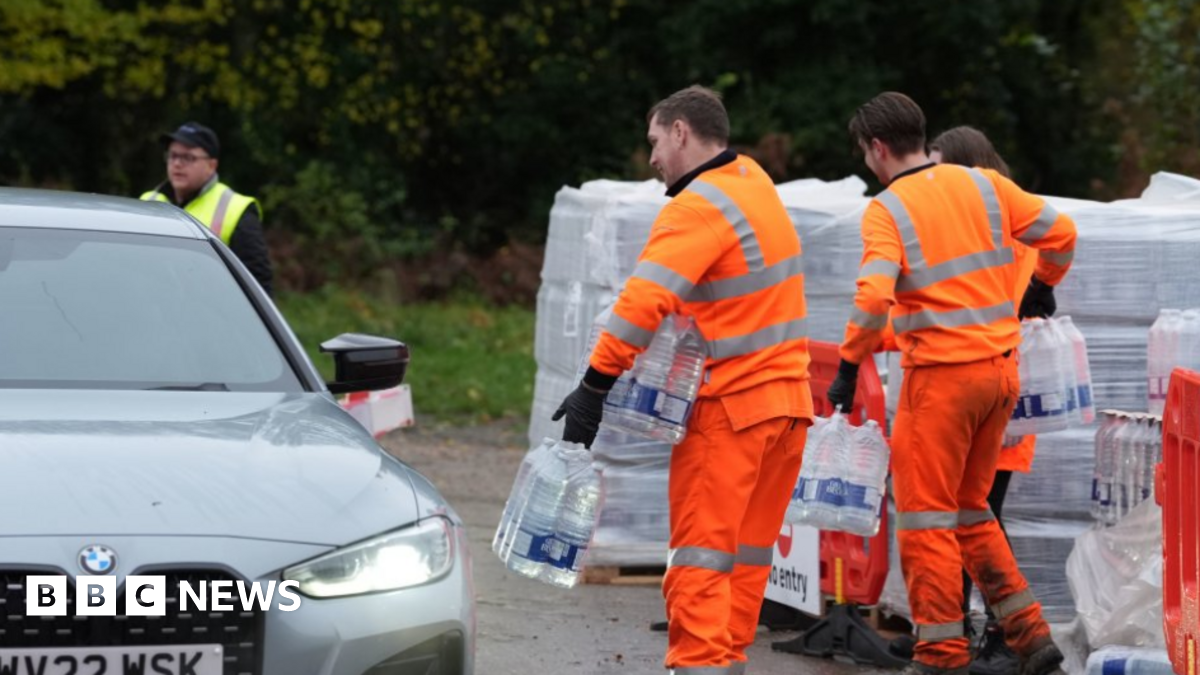In the News: Dalma Martinović Weigelt on the Impact of Human Medicines on Aquatic Environments – Newsroom | University of St. Thomas

Report on Pharmaceutical Pollution in Aquatic Ecosystems and its Relation to Sustainable Development Goals
1.0 Introduction: Pharmaceutical Contaminants and Water Quality
Recent analysis by Dr. Dalma Martinović Weigelt of the University of St. Thomas highlights a significant environmental challenge directly impacting the achievement of the United Nations Sustainable Development Goals (SDGs), particularly SDG 6 (Clean Water and Sanitation) and SDG 14 (Life Below Water). The presence of human medicines in aquatic ecosystems, even at low concentrations, is causing subtle but significant disruptions to aquatic life. This report summarizes the key findings regarding this form of pollution and its implications for global sustainability targets.
2.0 Scientific Findings on Ecological Impact
Scientific investigation into pharmaceutical pollution reveals a complex threat to aquatic health, which is a core component of SDG 14. While acute toxicity is not the primary concern, sublethal effects are widespread.
- Behavioral and Survival Alterations: Dr. Martinović Weigelt confirms that low-level exposure to pharmaceuticals can alter fish behavior and reduce survival rates in ways not immediately apparent.
- Dosage and Effects: The most severe effects documented in laboratory studies, such as death and deformation, typically occur at doses higher than those found in natural waterways. Dr. Martinović-Weigelt notes that pharmaceuticals are designed not to be acutely lethal.
- Ecologically Relevant Impacts: Current research is increasingly focused on ecologically realistic studies which are uncovering more nuanced, long-term effects on aquatic organisms and ecosystem stability.
3.0 Future Projections and Challenges to Sustainability
The problem of pharmaceutical pollution is projected to intensify, posing a growing threat to the long-term viability of SDG 6 and SDG 14. This trend is driven by factors related to SDG 3 (Good Health and Well-being) and SDG 12 (Responsible Consumption and Production).
- Increasing Chemical Diversity: Ecotoxicologist Alistair Bruce Alleyne Boxall notes that dozens of new chemical compounds are introduced to markets annually, expanding the range of potential pollutants.
- Rising Global Demand: An aging global population is increasing the demand for medicines. Experts predict this will lead to higher concentrations of pharmaceutical compounds in waterways in the coming decades.
- Unsustainable Trajectory: Without intervention, current trends in medicine consumption and waste management will continue to degrade water quality and harm aquatic life, moving further away from established sustainability goals.
4.0 Alignment with Sustainable Development Goals (SDGs)
The issue of pharmaceutical pollution is directly interconnected with several key SDGs:
- SDG 6: Clean Water and Sanitation: The contamination of waterways with pharmaceuticals directly undermines Target 6.3, which calls for improving water quality by reducing pollution and minimizing the release of hazardous chemicals and materials.
- SDG 14: Life Below Water: The documented negative effects on fish behavior and survival are a direct contradiction to Target 14.1, which aims to prevent and significantly reduce marine pollution of all kinds.
- SDG 3: Good Health and Well-being: This issue presents a paradox where the pursuit of human health through medicine inadvertently causes environmental harm, highlighting the need for a more holistic approach to health that includes the environment.
- SDG 12: Responsible Consumption and Production: The challenge calls for the implementation of Target 12.4, which advocates for the environmentally sound management of chemicals and all wastes throughout their life cycle to minimize their adverse impacts on human health and the environment.
Analysis of Sustainable Development Goals in the Article
1. Which SDGs are addressed or connected to the issues highlighted in the article?
-
SDG 6: Clean Water and Sanitation
- The article directly addresses the pollution of water bodies. The central theme is how “human medicines are quietly affecting aquatic ecosystems” and the need to “reduce pharmaceutical pollution in waterways.” This connects directly to the goal of ensuring the availability and sustainable management of water and sanitation for all, particularly concerning water quality.
-
SDG 14: Life Below Water
- The impact on aquatic life is a primary focus. The article explains that pharmaceuticals “can alter fish behavior and survival in unexpected ways” and discusses the “effects on aquatic life.” This aligns with SDG 14’s objective to conserve and sustainably use the oceans, seas, and marine resources for sustainable development, which includes protecting aquatic ecosystems from pollution.
-
SDG 12: Responsible Consumption and Production
- The article discusses the source of the pollution: the increasing use and disposal of pharmaceuticals. It notes that “medicine demand rises along with an aging global population” and that “dozens of new compounds are being introduced to markets every year.” This relates to SDG 12’s aim to ensure sustainable consumption and production patterns, specifically regarding the environmentally sound management of chemicals and wastes throughout their life cycle.
2. What specific targets under those SDGs can be identified based on the article’s content?
-
Target 6.3 (under SDG 6)
- Target 6.3: “By 2030, improve water quality by reducing pollution, eliminating dumping and minimizing release of hazardous chemicals and materials…”
- Explanation: The article’s focus on “pharmaceutical pollution in waterways” directly relates to this target. The statement that these hidden impacts are “driving scientists to better understand and reduce pharmaceutical pollution” explicitly aligns with the goal of improving water quality by reducing the release of these chemical compounds.
-
Target 14.1 (under SDG 14)
- Target 14.1: “By 2025, prevent and significantly reduce marine pollution of all kinds, in particular from land-based activities…”
- Explanation: Pharmaceuticals entering waterways are a form of land-based pollution that ultimately affects aquatic and marine ecosystems. The article’s discussion of how “human medicines are disrupting aquatic ecosystems” is a clear example of the pollution this target aims to reduce.
-
Target 12.4 (under SDG 12)
- Target 12.4: “By 2020, achieve the environmentally sound management of chemicals and all wastes throughout their life cycle… and significantly reduce their release to air, water and soil to minimize their adverse impacts on human health and the environment.”
- Explanation: The article highlights the increasing release of pharmaceuticals into the environment, stating that “the levels of pharmaceuticals are likely to go up.” This points to a challenge in the sound management of these chemicals, whose release has adverse impacts on the environment as described in the article.
3. Are there any indicators mentioned or implied in the article that can be used to measure progress towards the identified targets?
-
Indicator for Target 6.3
- Implied Indicator: Concentration of pharmaceutical compounds in water bodies.
- Explanation: The article implies this indicator by stating that experts “expect the overall concentrations of such compounds to increase over the coming decades.” Measuring these concentrations would be a direct way to track whether water quality is improving or declining due to this specific type of pollution.
-
Indicator for Target 14.1
- Implied Indicator: Health and behavior of aquatic organisms.
- Explanation: The article explicitly mentions that “even low levels of pharmaceuticals can alter fish behavior and survival in unexpected ways.” Monitoring changes in the behavior, survival rates, and overall health of key aquatic species like fish serves as a direct indicator of the ecological impact of this pollution.
-
Indicator for Target 12.4
- Implied Indicator: Volume and variety of pharmaceutical compounds released into the environment.
- Explanation: The article points to this by noting the “growing breadth of chemicals over time” and that “dozens of new compounds are being introduced to markets every year.” Tracking the quantity and diversity of pharmaceuticals being released would measure the effectiveness of management strategies aimed at reducing environmental contamination.
Summary Table of SDGs, Targets, and Indicators
| SDGs | Targets | Indicators (Implied from Article) |
|---|---|---|
| SDG 6: Clean Water and Sanitation | 6.3: By 2030, improve water quality by reducing pollution and minimizing the release of hazardous chemicals. | Concentration of pharmaceutical compounds in waterways (“overall concentrations of such compounds”). |
| SDG 14: Life Below Water | 14.1: By 2025, prevent and significantly reduce marine pollution of all kinds, in particular from land-based activities. | Health and behavior of aquatic organisms (ability to “alter fish behavior and survival”). |
| SDG 12: Responsible Consumption and Production | 12.4: Achieve the environmentally sound management of chemicals and significantly reduce their release to water. | Volume and variety of pharmaceutical compounds released into the environment (“growing breadth of chemicals”). |
Source: news.stthomas.edu
What is Your Reaction?
 Like
0
Like
0
 Dislike
0
Dislike
0
 Love
0
Love
0
 Funny
0
Funny
0
 Angry
0
Angry
0
 Sad
0
Sad
0
 Wow
0
Wow
0




















































.jpg.webp?itok=0ZsAnae9#)



























